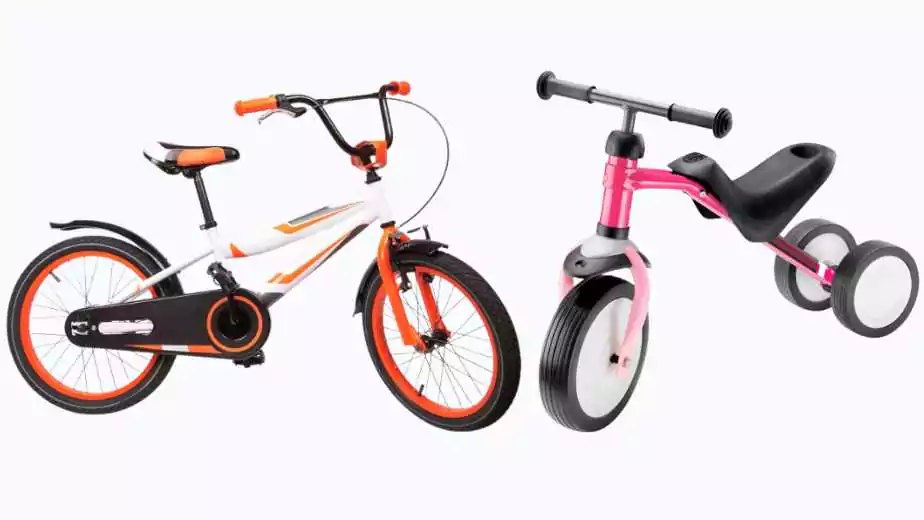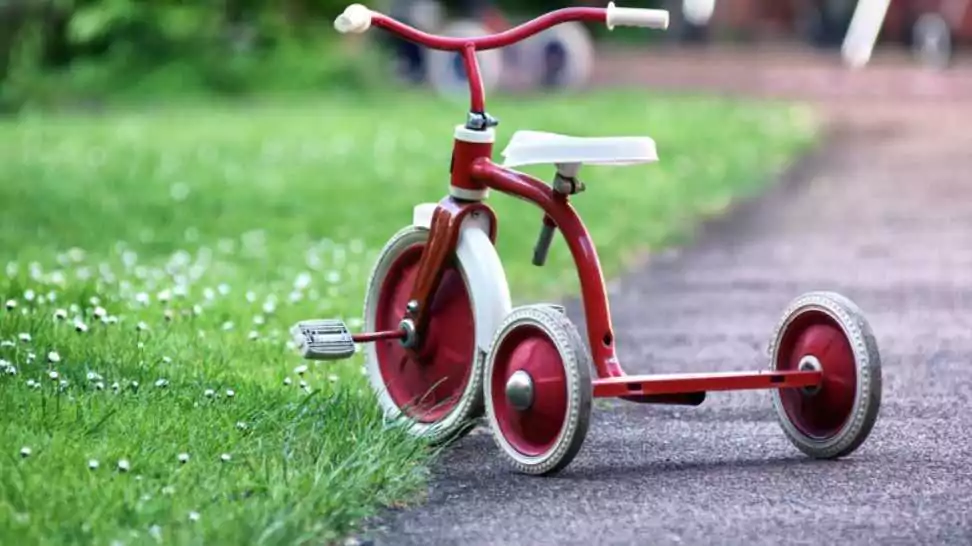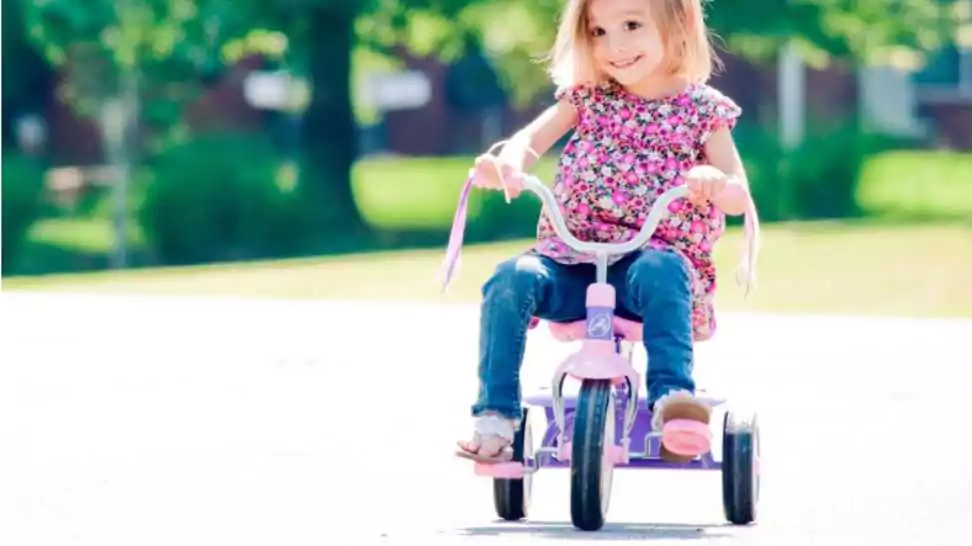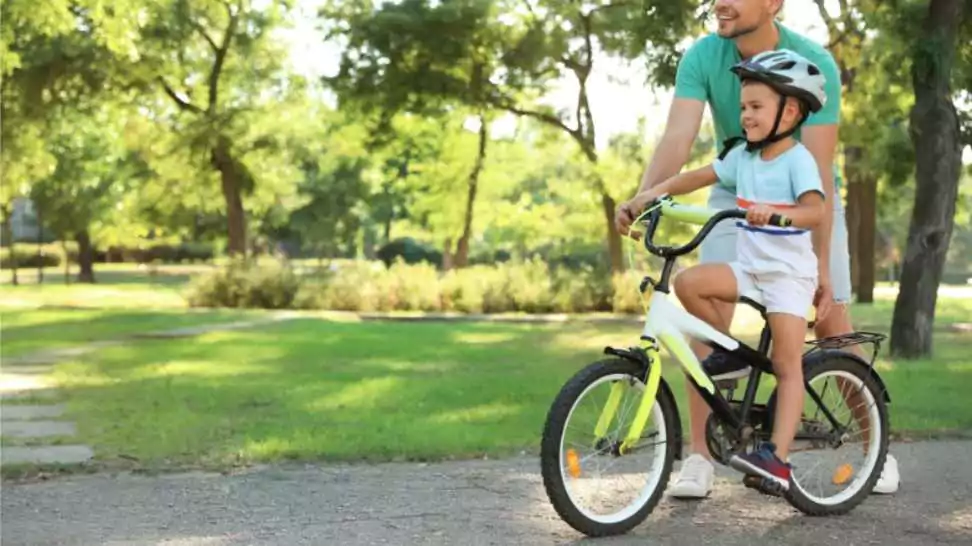Are Tricycles Safer Than Bicycles For Babies?

Introducing young children to the world of riding is a journey filled with mixed emotions for many parents. It’s a chapter brimming with laughter, the occasional fall, and the overwhelming joy of seeing your child pedalling into a new phase of independence. However, this exciting period also presents a significant decision-making challenge: selecting the most suitable riding option for your little one. In this blog, we address a crucial question that many parents grapple with: Are tricycles safer than bicycles for babies?
The purpose of this exploration is to compare the safety aspects of tricycles and bicycles, specifically tailored for the youngest of riders. It’s a decision that weighs heavily on parents, as it intertwines with the safety and comfort of their child. Our thesis statement is straightforward yet pivotal: While both bicycles and tricycles present their unique set of advantages, tricycles tend to offer greater stability and safety for younger children. This blog aims to unpack this statement, exploring the nuances of each option, and guiding parents towards making an informed decision for their little ones.
1 Understanding the Basics
Before delving into the safety aspects, it’s crucial to understand what we mean when we talk about tricycles and bicycles in the context of young riders. Tricycles, commonly known as trikes, are three-wheeled vehicles typically characterised by a straightforward, stable design. They are built to offer a sense of balance without the complexity of steering. On the other hand, bicycles for young children are two-wheeled vehicles, more challenging in terms of balance and coordination, designed to mimic the standard bicycles used by adults and older children.
The age range for these two types of rides varies significantly. Tricycles are often suitable for toddlers as young as 18 months to 3 years, serving as an introduction to the concept of pedalling and steering. Bicycles, particularly those with training wheels, are usually introduced to children around the age of 3 or 4 when they have developed a better sense of balance and coordination.
The key physical and developmental differences between tricycles and bicycles are substantial. Tricycles offer a low centre of gravity, making them less likely to tip over and easier for little legs to navigate. They cater to the developmental stage where toddlers are mastering the art of sitting upright, pushing forward with their feet, and eventually pedalling. Bicycles, however, demand more advanced motor skills. They require the child to maintain balance, steer, and pedal simultaneously, which is a significant leap from the skill set needed for a tricycle.
2 Safety Aspects of Tricycles

When it comes to the safety of our youngest riders, tricycles stand out for several key reasons. Understanding these can help parents feel more confident in their choices.
Stability with Three Wheels
The most notable safety feature of a tricycle is its three-wheel design. This setup inherently offers more balance than a two-wheeled bicycle. With one wheel at the front and two at the back, tricycles provide a stable base that helps prevent the side-to-side falls common with bicycles. This stability is particularly beneficial for toddlers who are still developing their sense of balance and coordination. It allows them to focus on the mechanics of pedalling and steering without the added challenge of staying upright.
Lower Risk of Falls
Another significant safety advantage of tricycles is their proximity to the ground. This design means that even if a child does tip over, the fall is short, and the likelihood of serious injury is reduced. The low height also makes it easier for children to mount and dismount the tricycle, fostering a sense of independence while minimising the risk of falls associated with getting on and off the ride.
Age-appropriate Design
Tricycles are specifically designed with young children in mind. Their features cater to the physical and cognitive abilities of toddlers. For instance, many tricycles come with wider seats for better support, large pedals for small feet, and easy-to-grip handles. These design elements ensure that the tricycle is not only a safe option but also a comfortable and enjoyable one for young riders. By aligning with the developmental stage of toddlers, tricycles provide a more suitable and safer riding experience for this age group.
3 Safety Concerns with Bicycles for Babies

While bicycles offer an exciting step towards more advanced riding skills for children, they also come with certain safety concerns, especially for very young riders.
Higher Risk of Falls
The most prominent challenge when it comes to bicycles is the balancing act on two wheels. Unlike tricycles, bicycles require a significant amount of balance, which can be a daunting task for toddlers. This lack of stability inherently increases the risk of falls. As young children are still developing their motor skills, maintaining equilibrium on a bicycle can be challenging, leading to more frequent and potentially more dangerous falls.
Learning Curve
The coordination and skill required to ride a bicycle do not come naturally to most young children. It involves simultaneously pedalling, steering, and balancing. This learning curve can be steep for toddlers, who are still mastering basic physical movements. The complexity of operating a bicycle often requires more time and patience, both from the child and the parent, adding to the risk of accidents during the learning phase.
Potential Injuries
With the higher likelihood of falls comes the increased risk of injuries. Common injuries associated with bicycle falls for young children include scrapes, bruises, and sometimes more serious injuries like fractures or head trauma. The higher riding position of a bicycle compared to a tricycle means that falls are from a greater height, potentially leading to more severe injuries.
Parental Supervision
Given these risks, bicycles for young children necessitate close parental supervision. Parents must be actively involved in the learning process, providing physical support, guidance, and encouragement. This supervision is not just about preventing falls but also about teaching safe riding practices, like looking out for obstacles and understanding the basics of road safety, if applicable.
4 Developmental Benefits
While safety is a paramount concern when choosing between tricycles and bicycles for young children, it’s also important to consider the developmental benefits each offers.
Tricycles: Enhancing Motor Skills and Confidence

Tricycles are an excellent tool for enhancing basic motor skills in young children. They help in developing leg muscle strength, coordination between hand and leg movements, and overall physical agility. The act of pedalling a tricycle aids in refining gross motor skills, while steering helps in honing fine motor skills. Moreover, the success and independence that come from being able to ride a tricycle boost a child’s confidence and self-esteem. This confidence can be a stepping stone to more challenging activities, making it an essential part of early childhood development.
Bicycles: Developing Coordination and Physical Fitness
As children grow and transition to bicycles, they embark on a journey of developing more advanced coordination and physical fitness. Riding a bicycle requires a more complex set of skills than riding a tricycle. It involves a greater level of balance, more precise motor coordination, and heightened spatial awareness. This challenge, while significant, is beneficial for the child’s physical development, agility, and endurance. Additionally, the increased physical exertion associated with bicycling is excellent for cardiovascular health and overall fitness.
Comparing the Developmental Impacts
Both tricycles and bicycles offer unique developmental benefits. Tricycles serve as a foundation, building basic motor skills, confidence, and a sense of independence in younger children. They are the first step in a child’s journey of mastering complex physical tasks. Bicycles, on the other hand, take these skills to the next level. They challenge children to develop finer coordination, better balance, and greater physical fitness. The transition from tricycles to bicycles is not just a step up in terms of physical demand but also cognitive and coordination skills. This progression is crucial in a child’s overall physical and cognitive development.
5 Choosing the Right Option for Your Child

Deciding whether a tricycle or a bicycle is better for your child involves weighing various factors. Here’s a guide to help you make the best choice for your little one.
Factors to Consider
- Age: This is the primary consideration. Younger children, typically between 18 months to 3 years, are better suited for tricycles. They are still developing basic motor skills, and tricycles offer the stability and simplicity they need. For children aged 4 and above, who have better balance and coordination, a bicycle becomes a more appropriate choice.
- Physical Abilities: Every child develops at their own pace. Some might be ready for a bicycle earlier than others, showing good balance and coordination skills. Conversely, if a child finds balancing challenging, sticking with a tricycle for a bit longer might be wise. Assessing your child’s physical abilities can provide a clearer direction.
- Interest of the Child: Children often indicate a preference for one type of ride over another. Paying attention to these cues can be helpful. A child who shows excitement towards a bicycle might be more motivated to overcome the learning curve, whereas a child who enjoys the stability and ease of a tricycle might benefit from staying with it a bit longer.
Importance of Safety Gear
No matter which option you choose, ensuring your child’s safety is crucial. Always equip your child with the appropriate safety gear.
- Helmets are non-negotiable. They protect against serious head injuries and should always be worn, regardless of the child’s riding skill level.
- Knee and elbow pads provide extra protection, especially for beginners, safeguarding against scrapes and bruises from falls.
- Wrist guards can be beneficial, especially for children learning to ride a bicycle, as they help to prevent wrist injuries.
6 Wrapping Up
In conclusion, the decision to choose a tricycle or a bicycle for your child should be based on their individual needs and abilities. While safety is a top priority, it’s also important to consider what will provide the most enjoyment and benefit to your child’s development. Remember, the goal is not just to teach them how to ride but to foster a love for physical activity, independence, and self-confidence.
Encourage and support your child through their learning process, and most importantly, ensure that their journey on either three wheels or two is both safe and filled with fun!
Community Q&A
About This Article
This article has been viewed 130 times.



